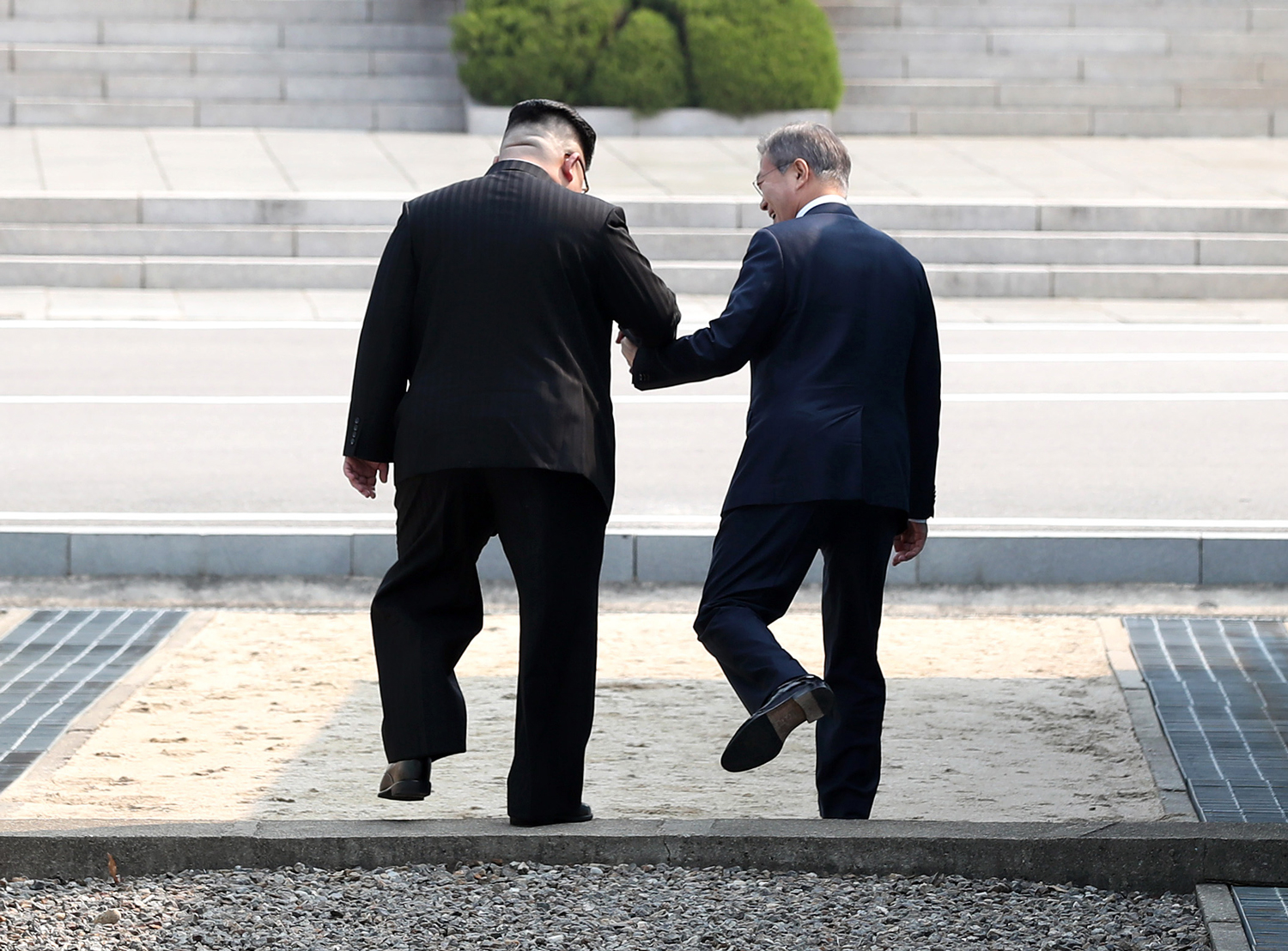Kim Jong-un became the first North Korean leader to set foot in South Korea at the Panmunjom Summit in April 2018, setting the stage for President Trump’s meeting with Kim in June. Just days after the summit, Paul Haenle spoke with Tong Zhao, a fellow in the Nuclear Policy Program based at the Carnegie-Tsinghua Center for Global Policy, about the significance of the Kim-Moon meeting and its implications for China and the United States.
Zhao says North Korea remains committed to maintaining its nuclear weapons program following the Kim-Moon summit, pointing to vague outcomes and timelines surrounding denuclearization in the Panmunjom Declaration. Zhao says Pyongyang had been strategic in its recent diplomatic outreaches, quickly repairing relations with China and South Korea. By announcing a halt in its nuclear and long range missile tests, North Korea also significantly lowered the chance that China or Russia will agree to further sanctions in the United Nations. Zhao attributes the North’s willingness to return to diplomacy to the completion of its nuclear weapons program, arguing that sanctions had a secondary effect. He says China was happy with the progress made at the Kim-Moon meeting and that the chance of military conflict continues to decline. However, he argues that Beijing was concerned that China might be sidelined in future negotiations. U.S. views of China as a strategic competitor have also stoked fears in Beijing that Washington may use North Korea to balance against China in the region, Zhao says. He expects the Trump-Kim meeting to have similar outcomes as those at the Kim-Moon summit. While the goal of denuclearization is likely to be reaffirmed, the meeting will focus on symbolic gestures rather than concrete outcomes. Zhao says China will be watching closely to see what is discussed regarding finding a resolution to the Korean War, an area where Beijing will want a say in the agreed outcome.




